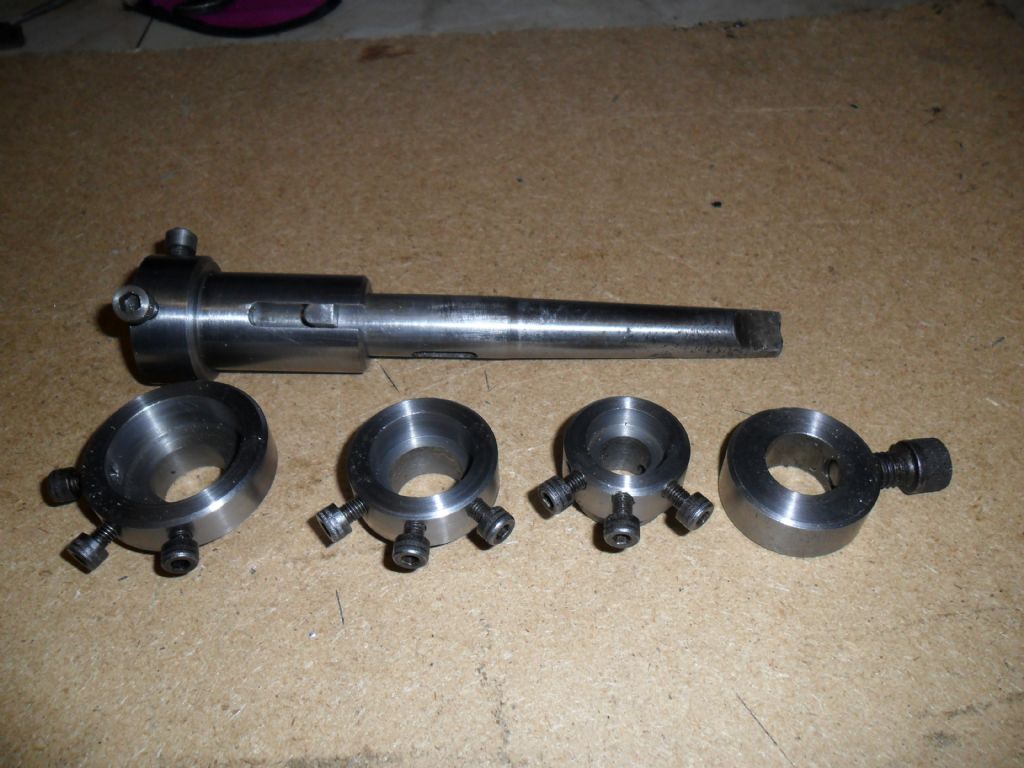Hi Corey!
Welcome aboard!
A few disjointed comments.
SHED
Yes, it needs to well insulated, to prevent rust, not to mention cold feet!
Mine has 19mm cladding on 50mm frames and 12mm inner cladding with glassfibre in between. Roof the same. Floor is the weakpoint, 18mm ply on five 8 x 2inch bearers.
Shudder to think how much weight is in there now!
Being only 10'9" x 6'9" external, a 2Kw fan heater runs for about 10% of the time.
The walls floor and roof all came in via a 1 metre wide walkway, as did the 6cwt lathe and the 4cwt mill/drill.
But do install a weatherproof vent at high level, and one at low level, (preferably at opposite corners) to ensure that any moist air can escape.
Floor needs to be strong. Eventually, you will have a lot of weight in there.
Security:
You will have a lot of money tied up in there, so fit a good at least 5 lever lock, AND hinge bolts. (Once you have the lathe you can make these. Turn the head off a 1.5 inch x No10 woodscrew. Screw into the back of the door using a drill chuck, until about 0.75" protrudes. Close door to mark the post. Drill clearance hole for the "screw"
Repeat at least once. The hinge bolts will prevent anyone lifting out the door after removing the hinge pins.
My shop has no windows, a) security, b) I'd only have put shelves across them anyway.
It is AMAZING how stuff accumulates, Chucks, Faceplate, etc, sets of drills, taps, die holders, wiggler, centre finder, drill chucks, measuring equipment, and so on, not to mention the tools that you make for yourself.
Make sure that you have plenty of light.
Heating, only "dry" heaters, NO gas or paraffin heaters, they give off moisture, AND could gas you in a confines space.
I had a Myford ML7, but did not like what the Rodney milling attachment did to it, so bought a separate Mill/Drill.
Rigidity is very important!
(Wish that I had had cash and space for a bigger machine!)
My lathe, now ten years old is Far Eastern, with Norton box, and power cross feed, basically metric, but dual dialled, so I keep the half nuts engaged when thread cutting, even when metric. With tipped tools, it will take 0.1" cuts happily. But tips can be expensive, so start off with High Speed Steel, and a bench grinder, to learn how to grind tools.
DO JOIN a local Model Engineering Society. You will get a lot of advice and practical help from fellow members, not to mention inspiration, and some despair when you first see their results.
TAKE HEART! You will do likewise as you gain experience.
A fourway toolpost is essential. Have never found quick change tooling necessary.. Designed and made a fourway back toolpost, to carry chamfer, backchamfer, and part off tools. Parting off with a back toolpost is so much less problematic.
So look for a cross slide with Tee slots, if possible.
Someone once said to me, "You can do small work on a big lathe,but you can't do big work on a small lathe", so buy a larger lathe than you think you need now. You will find yourself getting more ambitious as time passes.
You will need measuring equipment. I would suggest, a digital calliper, magnetic base, 0.005" plunger clock, and 0.0005" finger clock (or the metric equivalents) for starters. You can expand as you find the need; and you will!.
You will make accessories for it (Mandrel Handle, retractable tool holders, tailstock die holders, etc) so do allow space for storage for extra tools that you either make or buy.
Don't try to do it all at once. Sort the shed to take the machinery, and then install to maximise effective use of the space. (LOTS of shelves)
Hope that this helps.
Good luck!
Howard
Howard Lewis.






